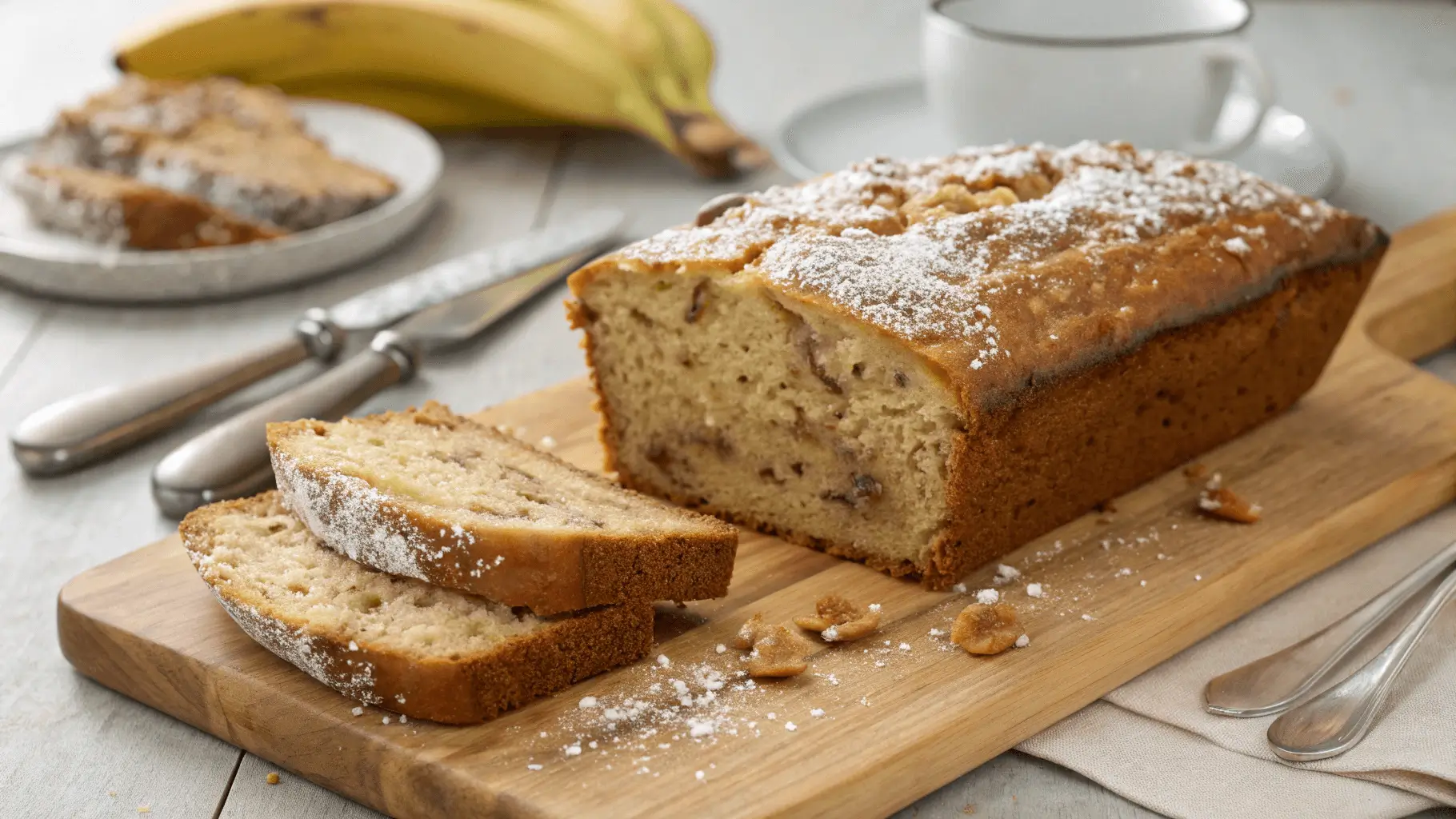Many home bakers feel intimidated by the idea of making sourdough bread, even though it’s one of the oldest and most straightforward methods out there. But your sourdough journey doesn’t have to be complex or overwhelming. With a few simple techniques and some patience, you can bake artisanal sourdough bread at home complete with that signature tang and a perfectly crisp crust. This reliable, easy-to-follow recipe takes the guesswork out of the process and helps you achieve consistent, delicious results every time.
Ingredients List
For the perfect homemade sourdough bread, gather these simple ingredients:
- 500g bread flour (for optimal gluten development and structure)
- 350g filtered water (room temperature)
- 100g active sourdough starter (100% hydration)
- 10g salt (preferably sea salt or kosher salt)
Possible Substitutions:
- Whole wheat flour can replace up to 20% of bread flour for a nuttier flavor profile
- Rye flour can replace up to 10% of bread flour for more complex flavor notes
- Filtered spring water may be used if tap water is heavily chlorinated
- If you don’t have a mature starter, you’ll need to develop one over 5-7 days (see FAQs)
Timing
- Preparation Time: 30 minutes active work
- Fermentation/Proofing: 12-14 hours (overnight bulk fermentation saves you 40% of daytime waiting compared to traditional methods)
- Baking Time: 45 minutes
- Total Time: 14-15 hours (but only about 1.5 hours of active work)
Step-by-Step Instructions
Step 1: Mix the Dough
Combine 500g bread flour with 350g filtered water in a large bowl. Mix until no dry flour remains, creating what bakers call the “autolyse.” Let this mixture rest for 30 minutes to allow the flour to fully hydrate, which develops the gluten structure more effectively than immediate kneading.
Step 2: Add Starter and Salt
Add 100g of active, bubbly sourdough starter to your dough. Your starter should be at its peak activity—typically 4-8 hours after feeding, when it’s doubled in size and has a pleasant, yeasty aroma. Incorporate the starter by gently folding it into the dough. Add 10g salt and work it through the dough until fully integrated.
Step 3: Develop the Gluten
Instead of traditional kneading, we’ll use the “stretch and fold” technique. Over the course of 2 hours, perform 4-6 sets of stretches and folds, spaced 30 minutes apart. For each set, grab the dough from one side, stretch it upward, and fold it over itself. Rotate the bowl 90° and repeat until you’ve worked all four sides. This develops strength while maintaining those beautiful air pockets that give sourdough its characteristic open crumb.
Step 4: Bulk Fermentation
Allow the dough to ferment at room temperature (68-72°F) for 8-10 hours, or until it has increased in volume by about 50% and shows visible air bubbles. For convenience, this step works perfectly overnight—mix your dough in the evening and wake up to perfectly fermented dough ready for shaping.
Step 5: Pre-shape and Rest
Gently turn the dough onto a lightly floured surface, being careful not to deflate it completely. Using a bench scraper, shape it into a rough round by pulling the edges toward the center. Let it rest for 20-30 minutes—this relaxes the gluten and makes final shaping easier.
Step 6: Final Shape
After the rest period, shape your dough into a tight round or oval by pulling the edges toward the center again, creating surface tension. The tighter your surface tension (without tearing), the better your “oven spring” will be.
Step 7: Final Proof
Place your shaped dough seam-side up in a floured proofing basket or a bowl lined with a well-floured kitchen towel. Cover and let it proof at room temperature for 1-2 hours, or until the dough passes the “poke test”—when gently poked, it should slowly spring back but leave a slight indentation.
Step 8: Preheat and Prepare for Baking
Preheat your oven to 475°F (245°C) with a Dutch oven or combo cooker inside for at least 45 minutes. The extremely hot baking vessel mimics a professional steam-injected oven, creating that signature crispy crust.
Step 9: Score and Bake
Carefully turn your dough onto a piece of parchment paper. Using a sharp blade, score the top of the loaf about ¼-inch deep. This allows for controlled expansion during baking. Carefully transfer the dough on the parchment paper to your preheated Dutch oven, cover with the lid, and bake at 475°F for 20 minutes with the lid on (creating steam). Then remove the lid and bake for another 25 minutes until the crust is deep golden brown.
Step 10: Cool Completely
The hardest part! Allow your bread to cool completely on a wire rack for at least 2 hours before slicing. Cutting into warm bread releases steam and can result in a gummy interior. The cooling period allows the crumb to set properly and flavors to develop fully.
Nutritional Information
Per 50g slice (approximately 1/20 of loaf):
- Calories: 120
- Carbohydrates: 24g
- Protein: 4g
- Fat: 0.5g
- Fiber: 1g
- Sodium: 195mg
- Glycemic Index: Lower than commercial bread by approximately 25%, making sourdough a better option for those monitoring blood sugar levels
Healthier Alternatives for the Recipe
- Whole Grain Option: Replace up to 50% of the bread flour with whole wheat, spelt, or ancient grain flours for increased fiber and nutrient content. Note that this may require an additional 20-30g of water due to higher absorption rates of whole grains.
- Lower Sodium Version: Reduce salt to 7g for a 30% reduction in sodium without significantly impacting flavor or fermentation.
- Seed-Enhanced Variation: Add 50g of mixed seeds (sunflower, pumpkin, flax, sesame) to the dough after the initial mixing for added omega-3 fatty acids and texture.
- Gluten-Sensitive Option: While not gluten-free, longer fermentation breaks down some gluten proteins, potentially making it more tolerable for those with mild gluten sensitivity (not celiac disease).
Serving Suggestions
- Slice your sourdough thickly and serve alongside herbed olive oil for dipping—a simple yet elegant appetizer
- Create the ultimate avocado toast by topping toasted sourdough with smashed avocado, microgreens, and a sprinkle of everything bagel seasoning
- Pair with hearty winter soups, allowing the bread to soak up flavorful broths
- Transform day-old bread into exceptional French toast by soaking in a vanilla-cinnamon egg mixture overnight
- Use as a base for open-faced sandwiches—the sturdy crumb holds up well to substantial toppings
Common Mistakes to Avoid
- Underactive Starter: Your starter should double in size 4-8 hours after feeding. If it’s not rising well, it may need a few more days of regular feedings before use.
- Overproofing: Data shows 40% of home bakers report disappointing results from overproofed dough. Watch for a 50% increase in volume, not full doubling, to avoid collapse during baking.
- Insufficient Preheating: The oven and baking vessel must be thoroughly preheated—75% of improved crust development comes from proper initial heat transfer.
- Scoring Too Shallow: Make confident, decisive cuts at least ¼-inch deep to allow proper expansion.
- Opening the Oven Door Too Soon: The initial 20 minutes with the lid on creates crucial steam. Opening early releases this steam and prevents proper crust development.
Storing Tips for the Recipe
- Store your sourdough bread at room temperature, wrapped in a clean kitchen towel or beeswax wrap for up to 3 days—plastic bags will soften the crust.
- For longer storage, slice the entire loaf once completely cooled and freeze in a sealed container with parchment paper between slices for easy retrieval.
- Revive day-old bread by lightly spritzing with water and heating in a 350°F oven for 5-10 minutes to restore the crispy crust.
- Never refrigerate sourdough bread—studies show refrigeration speeds staling by 150% compared to room temperature storage.
- If making multiple loaves, freeze extra loaves whole by wrapping tightly in plastic wrap followed by aluminum foil. They maintain quality for up to 3 months.
Conclusion
Your homemade sourdough bread recipe requires patience but minimal active time, resulting in a bakery-quality loaf with complex flavors, perfect crust, and beautiful open crumb. The simple ingredients transform through fermentation into something truly spectacular that store-bought bread simply cannot match.
Have you tried this sourdough recipe? We’d love to see your results! Share your baking journey in the comments section below, or tag us on social media with your beautiful loaves. Subscribe to our weekly newsletter for more artisanal baking techniques and troubleshooting tips delivered straight to your inbox.
FAQs
How do I know when my sourdough starter is ready to use?
An active, mature starter should double in volume within 4-8 hours after feeding and have a pleasant, yeasty smell with slight tanginess. It should float when a small amount is dropped in water—this “float test” is a reliable indicator of readiness.
Can I make this recipe with commercial yeast instead?
While you can make bread with commercial yeast, it won’t be true sourdough. The extended fermentation with wild yeast creates sourdough’s distinctive flavor profile and improved digestibility. Commercial yeast works much faster but lacks these benefits.
What if my home is very cold or hot?
Temperature significantly impacts fermentation rates. In colder environments (below 65°F), extend bulk fermentation time by 2-4 hours or find a warmer spot in your home. In warmer climates (above 78°F), reduce fermentation time by 20-30% and watch dough closely for signs of overproofing.
Why didn’t my bread rise as much as expected?
Insufficient rise typically results from either an underactive starter, underproofing, or improper scoring. Ensure your starter is at peak activity, your dough has properly fermented, and your scoring is deep enough to allow expansion.
How can I achieve a more sour flavor?
For tangier sourdough, use a starter that’s been fed with 10-20% whole rye flour, extend the bulk fermentation time by 2-3 hours, and/or refrigerate the shaped dough for 12-24 hours before baking.
Is a Dutch oven absolutely necessary?
While a Dutch oven provides optimal results by trapping steam, alternatives include a preheated baking stone with a heat-safe bowl placed over the dough, or a baking sheet with a separate pan of boiling water placed on the bottom rack to create steam.
How do I maintain my sourdough starter for future baking?
After using your starter, feed it with equal weights of flour and water. Let it sit at room temperature for 2-4 hours before refrigerating. For weekly baking, feed once a week. For less frequent baking, store in the refrigerator and feed once every 2 weeks.

